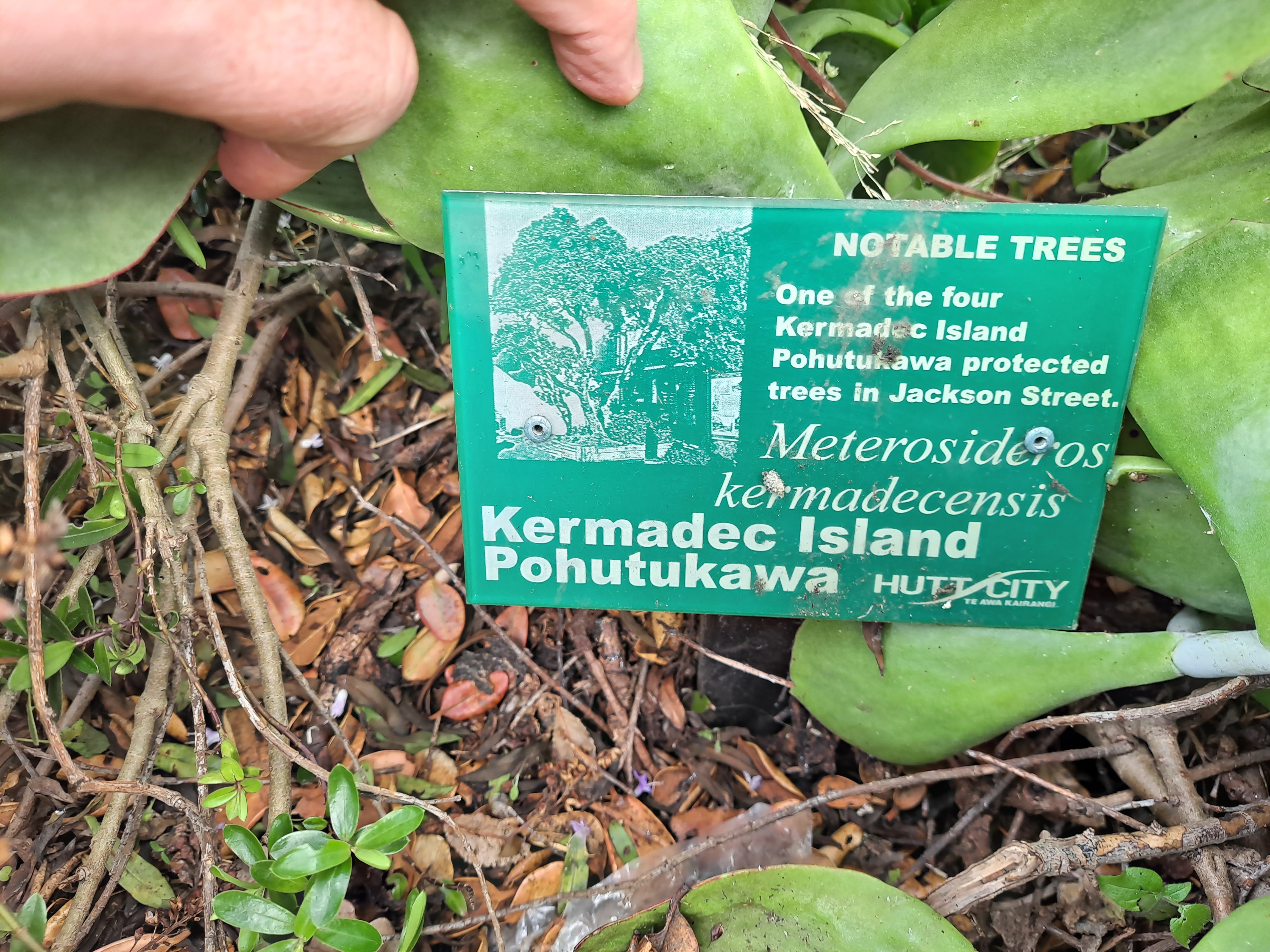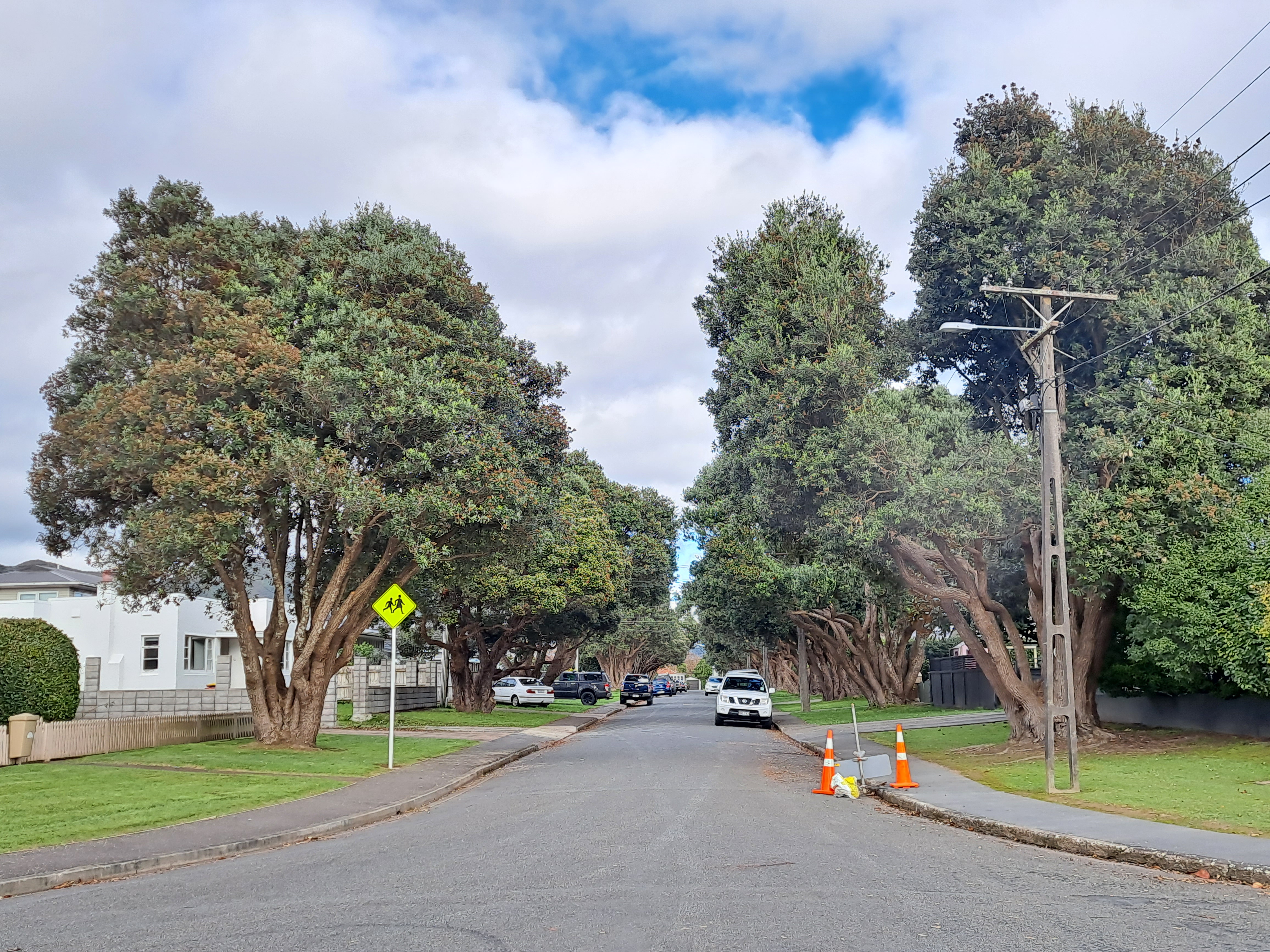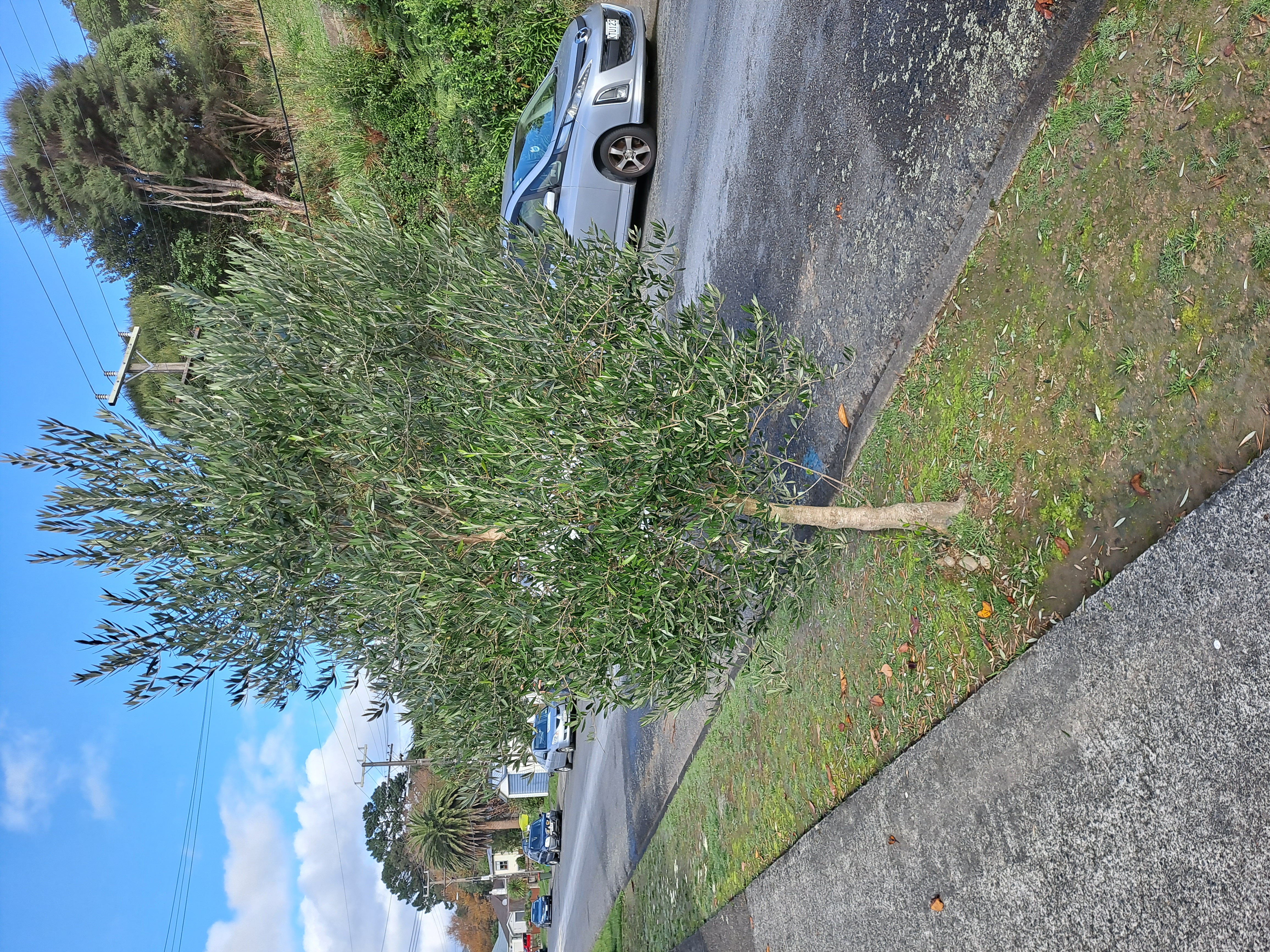Published: 7 July 2023
Two species of pōhutukawa outside Serenade Café on Jackson Street are to be replaced as part of Hutt City Council’s winter planting programme.
Fans of the quintessential Aotearoa New Zealand Christmas tree will be pleased to hear the trees will be replaced with another variety of pōhutukawa which is part of the Metrosideros family of trees.
Hutt City Council’s contracts manager, Colin Lunn, says council staff noticed the trees were showing signs of decay and defoliation and could not be brought back to health.
It’s not clear why they have died.
The Kermadec pōhutukawa was a protected tree, but the other was not protected.

The trees are being removed from the site and will be replaced with another suitable Metrosideros variety.
Colin has long been wrestling with invasive root systems in Lower Hutt’s many tree-lined avenues.
He says pōhutukawa are one of several species whose roots damage footpaths, driveways and underground infrastructure, splitting pipes as they grow.
“All pōhutukawa trees in Lower Hutt are historic plantings, some of them more than 80 years old, planted in small berms, creating infrastructure damage.” However the vast number of these trees are spectacular, form a presence and add character to our streetscapes. We want to retain the good form, healthy pōhutukawa and where possible, we will find solutions to keep them.
These days pōhutukawa are only planted in sites where berm space is available or within specified designed tree pits.

“When we have a street where some mature trees are causing problems and have to be removed, we form a draft plan of trees we want to retain and trees we want to remove, we then organise a meeting with residents from the street and discuss/refine the best plan for the street,” says Colin.
He says council staff have learned through trial and error, which trees will thrive and which will simply grow too big for streetscapes.
As part of Hutt City Council’s urban forest plan, trees with poor form are removed and healthy specimens are retained.
“We now plant species that are suitable for the site. We check above (powerlines) and consider below ground infrastructure to be sure.”
“Sometimes a tree has good form, with a full, healthy canopy, so we want to retain it. Where necessary we will attempt to carefully expose the tree roots using an air-vac machine and replace broken drains with PVC piping which is less likely to be affected by root infiltration.”
Most of the productive olive trees in Elizabeth Street in the Wellington suburb of Mt Victoria have had to be removed because their roots had become a tripping hazard and were damaging underground pipes.
Council staff here in Lower Hutt work with the community to carefully choose trees that suit the environment and there are now several sites which are well-managed by local residents.
“In Thornycroft Avenue, in Epuni, residents planted feijoas and olives where we had removed several very large pōhutukawa. It’s working really well.”

In Wainuiomata’s Bledisloe Crescent, poor performing trees were replaced with koroneiki olives, which are thriving.
